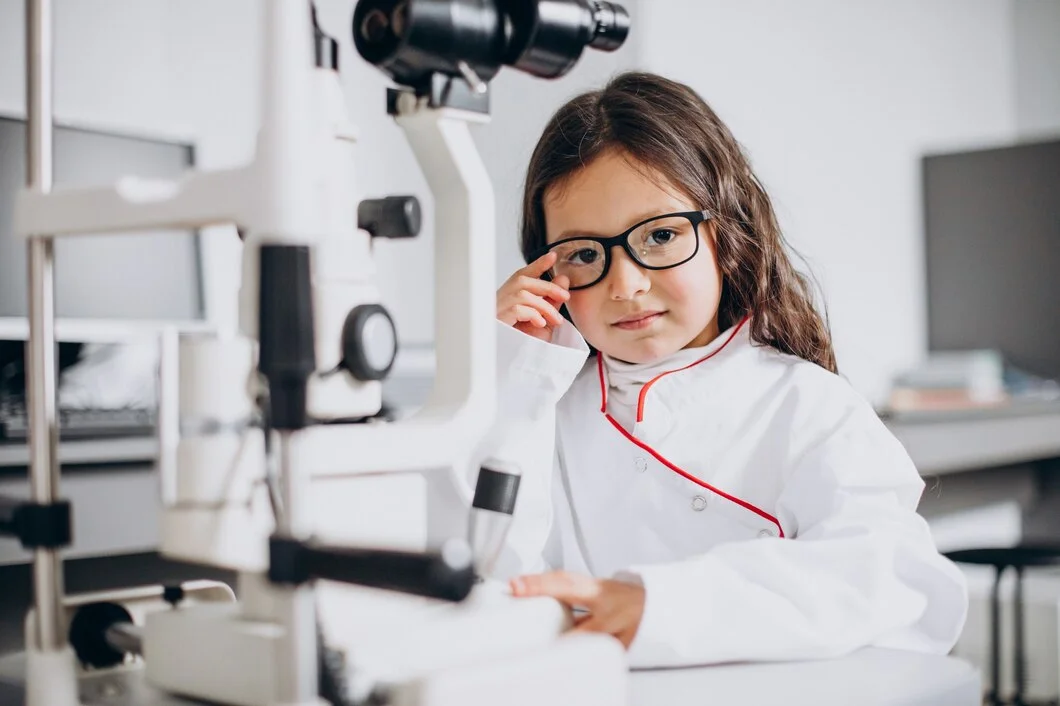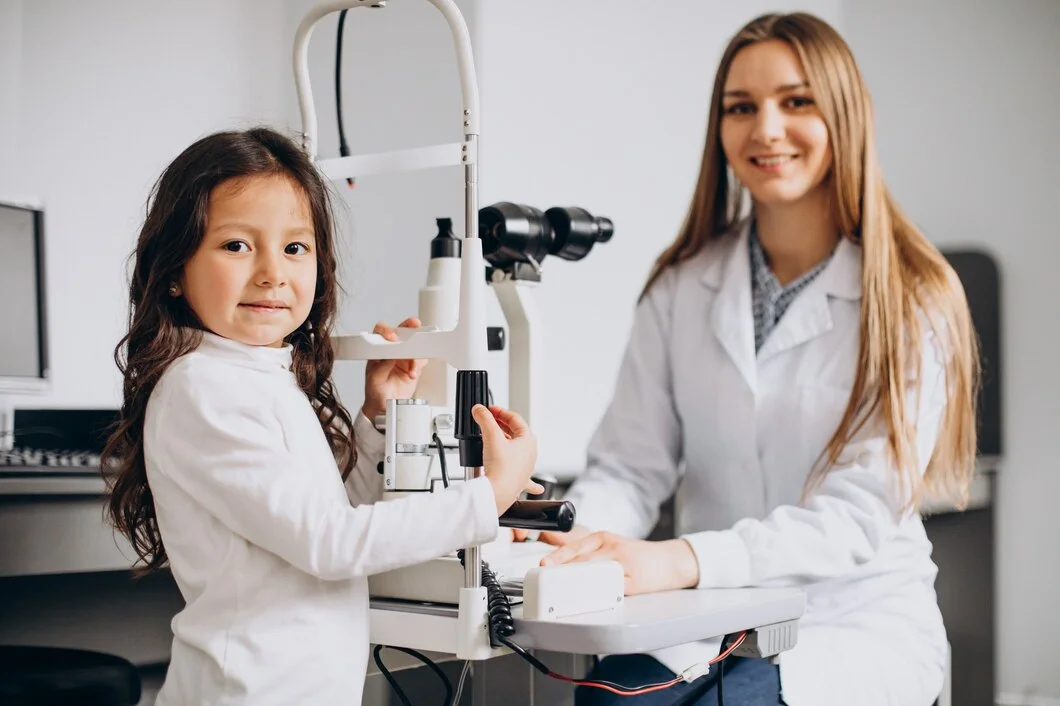Nearsightedness, or myopia, is a growing concern for parents as it affects an increased number of children worldwide. The constant strain on young eyes and the potential for future complications make finding safe and effective ways to manage this condition a top priority. Recently, red light therapy has appeared as a potential solution, but is the science there to back it up? Let's discuss what we know so far.

What is Red Light Therapy and How Does it Work (Theory)?
Red light therapy involves exposing the eyes to low-level red light for short, controlled periods. This is typically done at home using designated devices that emit specific wavelengths of red light. The theory behind this treatment is that red light increases blood flow to the tissues of the eye, particularly the sclera and choroid. This improved circulation is believed to influence the growth and shape of the eyeball, potentially slowing down the elongation that occurs with nearsightedness.
Risks Associated with Red Light Therapy
A recent study shows that there is a higher chance of retinal damage for people associated with red light therapy.Red light therapy is generally considered safe, especially when used under a doctor's supervision. However, there are some potential risks associated with it, especially if not used properly.
Here are some of the risks:
Skin burns:
Exposure to
elevated levels of red light can cause skin burns, redness, and blistering. This is
more likely to occur if you use the device for too long or if the device is not
functioning properly.
Eye damage:
Red light therapy devices emit bright light, which can damage your eyes if you don't
wear protective goggles. Make sure to wear goggles that are specifically designed
for red light therapy.
Worsening certain medical conditions:
Red light
therapy may worsen certain medical conditions, such as eye disease,
photosensitivity, and skin cancer. If you have any of these conditions, talk to your
doctor before using red light therapy.
Lack of long-term safety data:
Red light therapy is a
relatively new therapy, and there is not a lot of data on its long-term safety.


Here are some other things to keep in mind:
Talk to your doctor before using red light therapy, especially if you have any underlying health conditions.
- Use a red light therapy device that is FDA-cleared.
- Follow the manufacturer's instructions carefully.
- Stop using red light therapy if you experience any side effects.
Studies conducted primarily in China have shown promising results. A key study published in Ophthalmology in 2022 involved children with nearsightedness who were treated with red light therapy for a year. The results showed a significant difference in eyeball elongation compared to a control group. The treated group showed slower growth, suggesting a potential benefit in slowing myopia progression. However, it's important to note that these studies involved a limited number of participants and a relatively short period.
Safety and Availability: Questions Remain
While the initial research is encouraging, there are still questions about the long-term safety of red light therapy for nearsightedness. Specifically, more research is needed to understand the potential for retinal damage from repeated low-level light exposure. Additionally, these devices are not yet FDA-approved in the United States and may not be readily available in all regions.
Current Best Practices for Myopia Management
Established methods for managing nearsightedness in children are still the mainstay of treatment includes:
Increased Outdoor Time: Studies have consistently shown that spending more time outdoors, particularly in natural sunlight, can help slow the progression of nearsightedness.
Wearing Appropriate Eyeglasses: Regular eye exams at nearby eye clinic and properly prescribed eyeglasses ensure clear vision and can help prevent strain on the developing eye.
Orthokeratology (Ortho-K): This approach involves wearing special contact lenses at night that reshape the cornea, temporarily correcting nearsightedness during the day.
Talking to Your Eye Care Experts
While red light therapy shows promise as a potential future treatment option, it's important to consult a qualified pediatric expert before considering it for your child. They can discuss the latest research, potential risks, and benefits, and determine if this approach is right for your child's specific needs.
The Takeaway for Parents
Red light therapy is an innovative approach with ongoing research. More extensive studies are needed to definitively decide its safety and efficacy.
Established methods like spending more time outdoors and proper eyeglass use are still the best options for managing nearsightedness in children.
If you're interested in red light therapy, discuss it with your child's eye doctor to understand the potential benefits and risks in the context of your child's situation.
Remember, your child's eye health is paramount. Consulting a qualified professional is crucial before pursuing any new treatment options.
